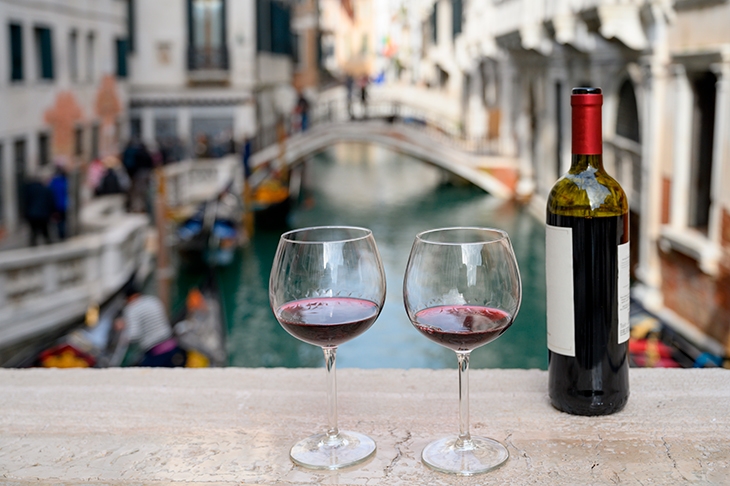We were discussing travel, that forbidden delight now tantalisingly close. Where would be our first destination? Forswearing originality, I chose Venice. Among the world’s greatest paintings, one in particular does not merely come to mind. It fills the mind. I have never been in the Serenissima for the Feast of the Assumption of the Virgin, probably just as well. In mid-August, there are bound to be pedestrian traffic jams all the way from the Piazza to the Rialto. But it is possible to imagine the event. Go to Santa Maria Gloriosa dei Frari. Use your inner eye to fill the church with the entire nobility of Venice, festooned with gold and jewels. The choir and the censers are both in full cry. Process down the nave, and there, to the left, is the Titian masterpiece which adds lustre to Gloriosa.
There is no finer female portrait. The Virgin has cast off the frailties of old age. Once again, she is the tremulous girl of the Annunciation. Her Son, arms outstretched in greeting, is welcoming her home to be Queen of Heaven. This is a work of profound beauty and awe-inspiring religiosity.

A short stroll brings you to some old girls who do not resemble the Virgin Annunciate. Tiny, with arms like chicken bones, they run a restaurant, Ai Cugnai. Although there is a menu, it is superfluous. Just ask what is especially good today, and it will arrive, in quantity. Despite all evidence to the contrary, any male customer is assumed to be a starveling creature in desperate need of a substantial repast. Wine comes in jugs. From the Veneto, the white and the red are both a decent quaff. All the other diners will be locals. This is a surviving enclave of Venetian Venice.
There is one oddity about international Venice. One might have thought that some of the globe’s finest chefs would have set up in business and that the world’s gourmets would have followed them. Not so. I have never had a superb meal in Venice. Plenty of good ones, one or two indifferent ones — Harry’s Bar is not a patch on its London namesake — but nothing memorable. The Veneto produces wines which are worth more than a quaffing jug. Properly aged Amarone from a good producer should be outstanding. A couple of years ago, I drank a 2010 Vigna Garzon from Pieropan, remarkable producers who can even supply a drinkable Prosecco. Huge and complex, the Amarone was barely ready and tasted as if it would last for decades. On Venetian restaurant matters, there are rumours that the baleful influence of organised crime restricts the scope for innovation. Then again, Italians are prone to blame all failure on the mafia. Then further again, the mafia does exist.
Policing questions remind one of Commissario Guido Brunetti in Donna Leon’s books. His wife may be a feminist, but she does the cooking, based on the finest local ingredients. Her husband’s duties very rarely interfere with mealtimes and the description of those meals is mouth-watering. Even so, Venice should be capable of more than excellent home cooking.
Wine comes in jugs. From the Veneto, the white and the red are both a decent quaff
Home cooking makes me think of Dorset, and friends whom I have often embarrassed in this column. I visited them for work reasons, of course. They both enjoy cooking, and Dorset can rival Venice when it comes to local ingredients, though Tuscany might be harder. Giuseppe Sesti, well known to them, is a marchese who makes wine in Montalcino and a fascinating fellow in so many ways. On an evening full of the promise of summer, we drank some of his 2015 Brunello, a wine which does mature early. Its perfume evoked Tuscan meadows; its harmony, Tuscan civilisation. Before he concentrated on wine, Gigi was a musician and an astronomer: far from irrelevant qualities for a vigneron. By the second bottle, we felt that we were hearing the music of the spheres.






Comments